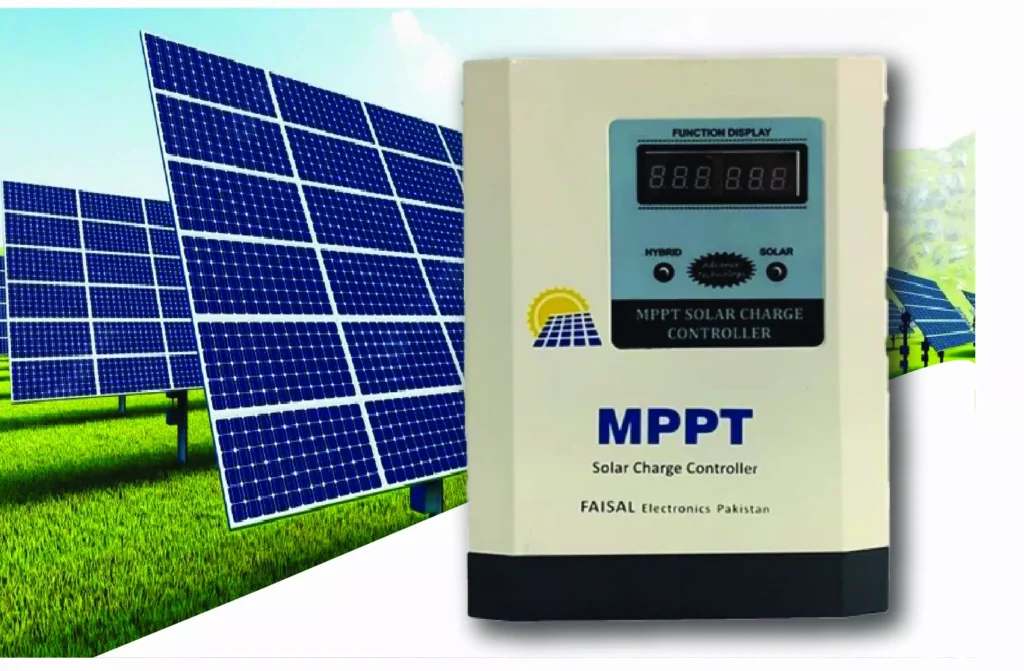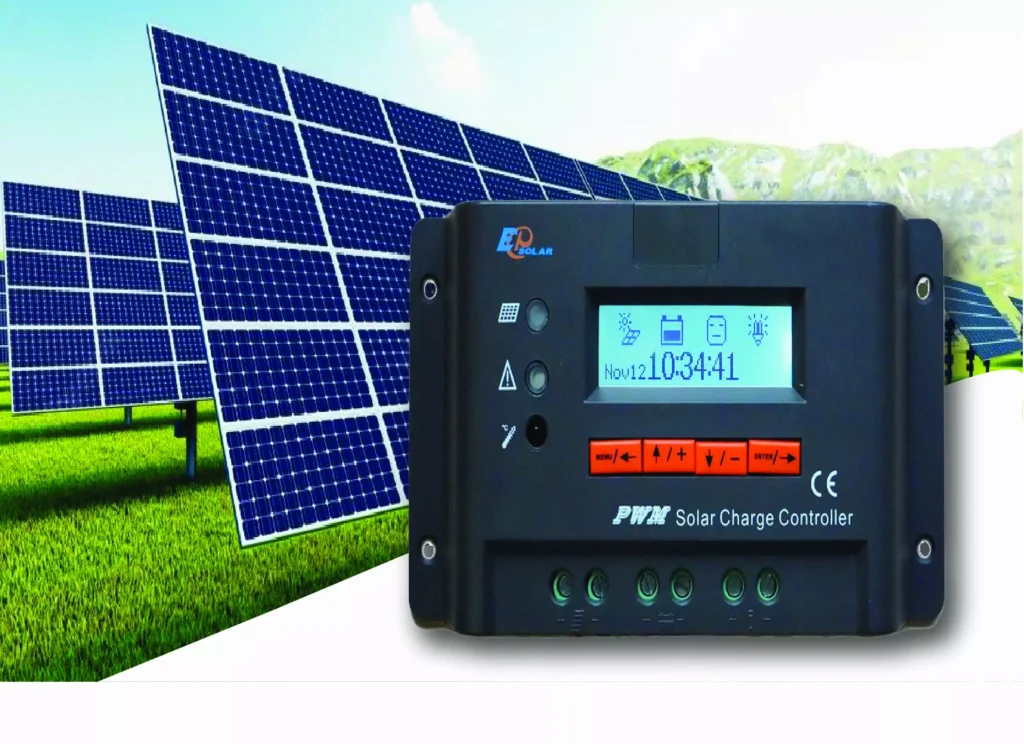Solar Charge Controller
Renewable energy harnessed from solar power offers a sustainable and eco-friendly solution to meet the worlds.
Solar Charge Controller
A solar charge controller regulates the voltage and current from solar panels to manage power flow into the battery. It prevents deep-cycle batteries from overcharging during the day and stops stored power from flowing back to the panels at night, avoiding battery drain. This controller ensures optimal battery performance by preventing overcharging and over-discharging. Additionally, it offers features like load control and lightning protection.
There are two main types of solar charge controllers: Pulse Width Modulation (PWM) and Maximum Power Point Tracking (MPPT). While both operate differently, MPPT controllers are more efficient and commonly used in solar installations, though they are also more expensive.
Functionality of Solar Charge Controller
The solar charge controller connects via cables to both the solar panels on one end and the batteries and appliances on the other end. It serves as a kind of switching center between these three components. Charge controllers are essential components of any solar panel system, as the panel voltage continuously fluctuates throughout the day, ensuring that the batteries receive the required voltage power. This is also true from the consumer’s end, where demand can vary according to their requirements. The solar charge controller must ensure that the limit voltages are met to protect the battery.
Speak to an Expert
Join the Finetech Solar community and let us help you transition to a cleaner, greener, and more cost-effective energy solution. Reach out today to learn how our solar services can benefit your home, business, industry.
Types of Solar Charge Controllers
There are two main types of solar charge controllers commonly used in Pakistan:
- MPPT Charge Controller
- PWM Solar Charge Controller

MPPT Charge Controller
A Maximum Power Point Tracking (MPPT) charge controller first measures the Vmp voltage of the panel and then adjusts that measured voltage according to battery voltage requirements. MPPT charge controllers ensure you utilize the maximum available power from the panel because power into and out of the charge controller equals in power. When the voltage drops to the required battery bank voltage, the current is raised, allowing you to harness the maximum power from the panels. Unlike PWM, MPPT charge controller allows you to install a higher number of arrays in power than battery power. With a 20V solar panel, you can charge a 12V battery bank, or two in series can charge up to a 24V battery bank, and three in series can charge up to a 48V battery bank.


PWM Solar Charge Controller
Pulse Width Modulation makes a direct connection from the solar array to the battery bank. They are used for very small-sized solar panels, often employed for camping, lighting, and charging mobile phones. However, they are not recommended for larger solar panel systems. The working criteria of a PWM charge controller are much like an MPPT solar charge controller, but they are not as efficient.
When there is an uninterrupted connection between the panel and the battery, the panel’s voltage is pulled down to the battery voltage. As the battery charges, its voltage rises, causing the solar panel’s voltage output to increase as well, utilizing more solar power as it charges. Therefore, it’s crucial to ensure that you match the nominal voltage of the solar array with the voltage of the battery bank.

